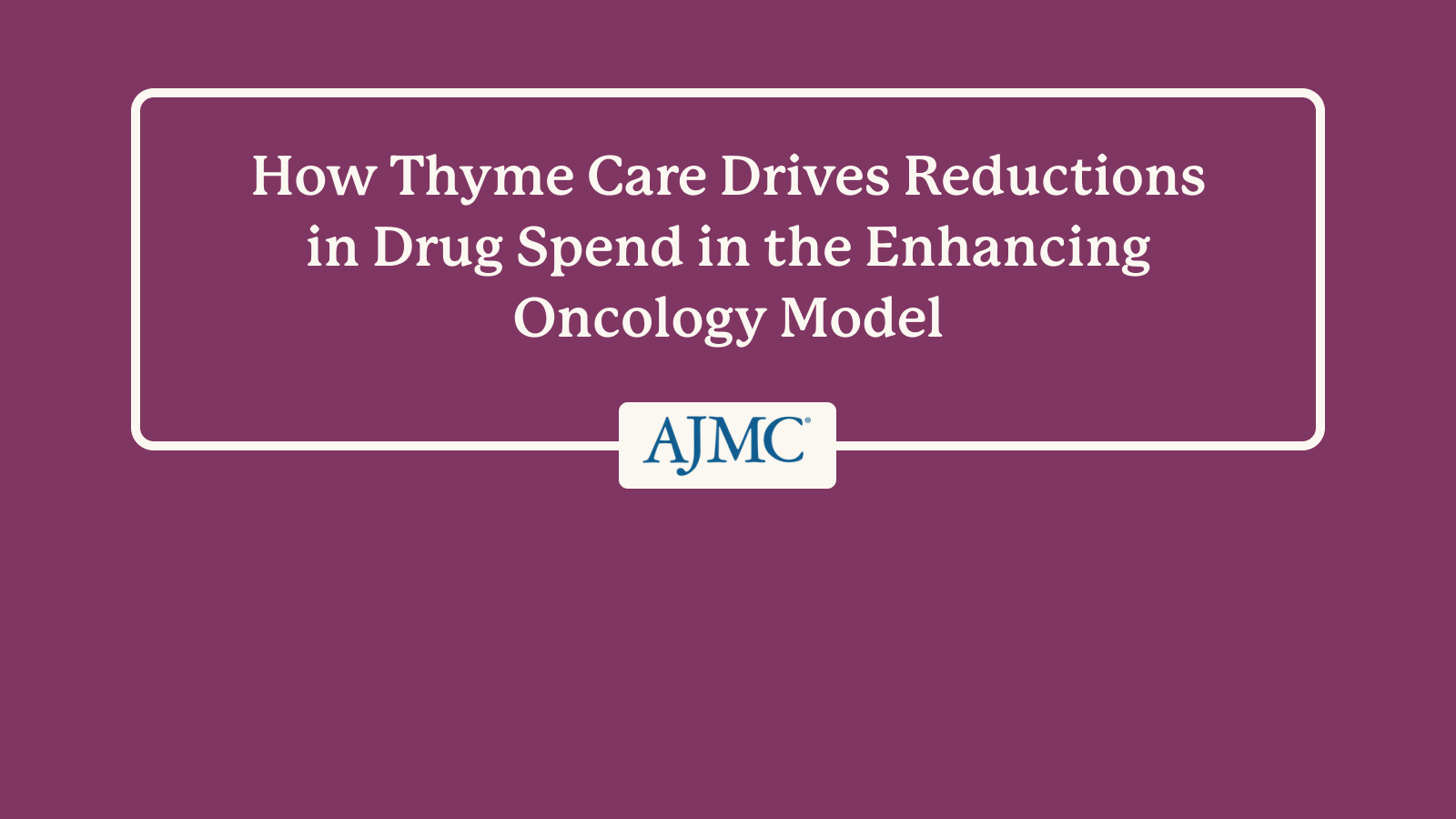How Thyme Care Drives Reductions in Drug Spend in the Enhancing Oncology Model
The Enhancing Oncology Model (EOM) is an alternative, value-based payment model from the Center for Medicare and Medicaid Innovation (CMMI), launched in July 2023.1 Participating practices assume mandatory downside risk on the total cost of care for Medicare beneficiaries with 1 of 7 common cancer types undergoing systemic drug treatment. Additionally, practices must assure a minimum savings for CMS; in other words, they must clear a certain hurdle before they can access any sort of shared savings.
Value-based care, in its earliest iterations of messaging, was often synonymized with attempts to reduce acute care utilization—essentially keeping patients healthy in their communities and out of the hospital in order to both improve care quality and reduce costs, as such hospitalization can be very expensive.
Value-based care activities that aim to reduce acute care utilization include proactive symptom management and care coordination across multiple providers. While this approach and philosophy are correct, and vital to ensuring a patient’s well-being while navigating a complex and confusing health care environment, it is likely insufficient as a stand-alone strategy in cancer.
Another way to frame this is by studying the cost drivers in varying conditions, such as a joint replacement vs chronic kidney disease vs cancer. In the first example, costs are likely driven by surgery and associated hospitalization and rehab; in the second, by crash dialysis starts and kidney transplantation; and in the third, by both hospitalization use and the ever-escalating prices of systemic therapies. Nearly a decade ago, around the start of CMMI’s last oncology value-based payment model, the Oncology Care Model (OCM),3 studies indicated that drug costs accounted for just over half the total cost of care in an average 6-month cancer treatment episode (acknowledging some heterogeneity here by primary cancer diagnosis).4 That same analysis found that by the end of OCM’s run, in 2021, cancer drug costs had climbed up to account for over 71% of the total cost of care.4 Thus, attempting to secure value in cancer care delivery by driving cost savings necessarily involves addressing drug spend as the largest driver.
Insurers are well aware of the proliferating spend levels in cancer drugs and oftentimes respond with a variety of utilization management strategies such as prior authorization, step-edits, and formulary management.5 However, such strategies bear the risk of adding administrative complexity and requiring additional staffing on the part of the practice to manage, and over time lead to provider abrasion. As a cancer-focused, value-based care enablement company, Thyme Care partnered with a large multipractice community oncology group to enter as a participant in the EOM and stand up a robust and comprehensive program for Medicare beneficiaries.6 Thyme Care’s strengths include deep data science, actuarial and oncology-specific domain expertise, and 2-way data integrations into the electronic health record with our partner practices. These allow the clinical team to make thoughtful and nuanced recommendations for cancer drug prescribing and dispensing in a way that is aligned with oncologist and oncology pharmacist workflows and logistic realities. Additionally, the hypothesis was that this personalized approach (at the clinic level) would yield better physician buy-in than traditional utilization management strategies.
In evaluating the universe of such drug recommendation opportunities, the Thyme Care clinical expert team prioritizes 5 key elements for every idea, as follows:

